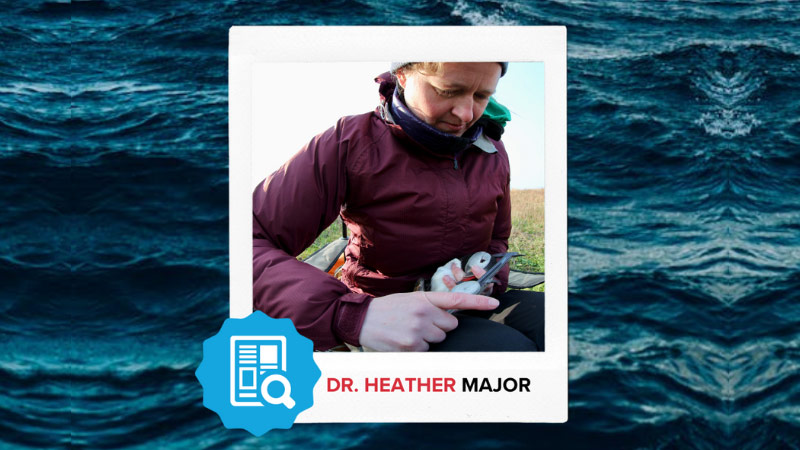Sustainability Research Champion: Dr. Heather Major
Author: UNB Sustainability
Posted on Jun 4, 2024
Category: Sustainability Research Champions

Universities play a crucial role in achieving a sustainable future, especially through their research. Considering this, we are excited to highlight individuals and groups at UNB that have dedicated their time to pursuing sustainability-related research. Know someone who should be a Sustainability Research Champion? Let us know at sustain@unb.ca.
Our newest Sustainability Research Champion is Dr. Heather Major, an Associate Professor of Biological Sciences.
Phenotypic plasticity or adaptation? Response of Atlantic Puffins (Fratercula arctica) to ocean warming in the Bay of Fundy/Gulf of Maine
Change in body size has been coined the third universal rule of climate change. Bergmann’s and Allen’s rules state that when temperatures are warm, body size of animals should be smaller than in cool locations; and the size of appendages (and thermoregulatory organs) should be larger with respect to body size. In both cases, a smaller body size and larger thermoregulatory organs allows for more effective heat dissipation and individuals that are better adapted to their environment. However, malnutrition during development may also lead to reduced body size, but without the fitness benefits assumed under Bergmann’s and Allen’s rules.
Atlantic Puffins are a cold-adapted, northern seabird; the Bay of Fundy/Gulf of Maine (BoF/GOM) represents the southern-most extent of their global range and is rapidly warming. At Machias Seal Island (within the BoF/GOM), the Atlantic Laboratory for Avian Research at UNB has been monitoring puffins annually since 1995 and noted a change in puffin chick diet coincident with a regime shift in the GOM in 2010. This change in diet has resulted in reduced chick growth rates and chicks departing the island at the end of the nesting season being smaller in more recent years. In January 2024, we published a paper detailing decreasing body size and increased bill size of puffins, that are consistent with Bergmann’s and Allen’s rules, and malnutrition during development.
Our current project, as part of a larger project aimed to understand the impacts of ocean warming on seabirds at Machias Seal Island, will investigate the relationship between adult and offspring size, and survival and recruitment rates of large versus small puffins. Results from this study will help us disentangle whether observed changes in body and bill size are adaptive and confer a fitness benefit or not.
How does your work intersect with sustainability?
Seabirds are a top marine predator. During the breeding season they congregate in large colonies that they return to annually and bring forage fish to feed their chicks (where they can be viewed, identified to species and counted by researchers). Thus, monitoring seabirds provides critical information about the marine environment that is much more difficult to get from other marine species that can be difficult to find and survey. Understanding how seabirds respond to climate change will provide important information that is key for effective policy development and management of the marine environment as a whole.
Specifically, this project intersects with sustainability by providing important information concerning the health of the marine environment and how a marine top predator is responding to climate change.
What impact do you hope this research will have?
I hope this research provides new information concerning the impacts of climate change on puffins (how they are coping) and gives managers the ability to better draft policy to benefit marine ecosystems, especially those undergoing rapid warming.
Learn more about Dr. Heather Major's work at the Atlantic Laboratory for Avian Research.